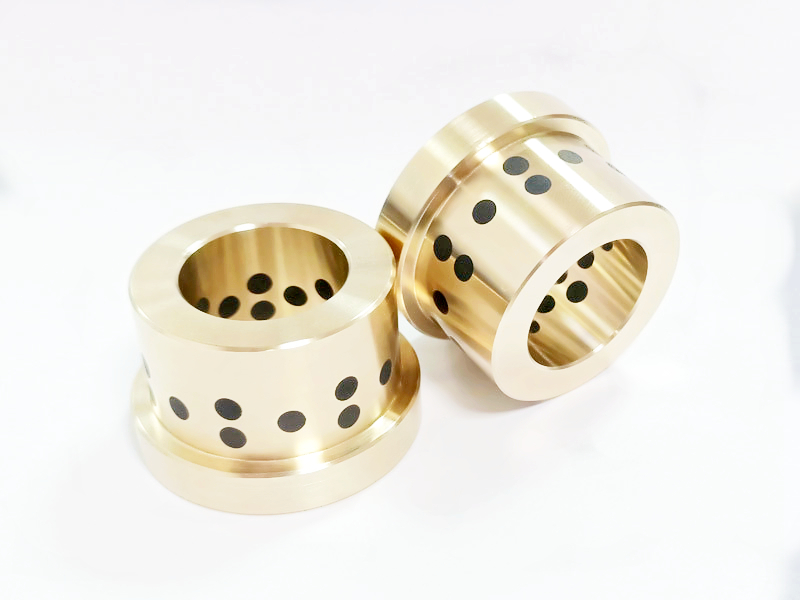CNC Grinding of Copper and Brass: Ensuring Quality in Consumer Products Manufacturing
Introduction
The consumer products industry places significant emphasis on aesthetics, durability, and precision. Copper and brass, favored for their excellent electrical conductivity, corrosion resistance, and appealing finish, are commonly utilized in consumer products such as electronic connectors, decorative hardware, and precision components.
Advanced CNC grinding services are crucial for achieving the exact dimensions, smooth surface finishes, and tight tolerances required in consumer goods manufacturing. CNC grinding of copper and brass enhances product consistency, ensures high-quality finishes, and improves overall customer satisfaction.
Copper and Brass Materials
Material Performance Comparison
Material | Tensile Strength (MPa) | Yield Strength (MPa) | Electrical Conductivity (% IACS) | Typical Applications | Advantage |
|---|---|---|---|---|---|
220-380 | 70-345 | ≥99% | Electrical connectors, busbars | Exceptional electrical conductivity, excellent corrosion resistance | |
220-350 | 69-320 | ≥100% | Electronic terminals, precision parts | High purity copper, superior electrical conductivity | |
345-470 | 125-310 | 26-30% | Decorative hardware, fittings | Excellent machinability, attractive aesthetic finish | |
345-500 | 130-350 | 28-32% | Valves, locks, consumer fittings | Good corrosion resistance, excellent formability |
Material Selection Strategy
Selecting copper or brass materials for consumer products manufacturing should align with specific product requirements:
Electrical components requiring high conductivity and purity: Copper C110 (TU0) provides maximum electrical efficiency.
Cost-effective electrical components with strong conductivity: Copper C101 (T2) offers excellent performance with economic value.
Decorative consumer hardware demanding visual appeal and machinability: Brass C360 ensures easy manufacturing and aesthetic quality.
Components needing good corrosion resistance and formability: Brass C385 balances performance and visual consistency.
CNC Grinding Processes
Process Performance Comparison
CNC Grinding Technology | Dimensional Accuracy (mm) | Surface Roughness (Ra μm) | Typical Applications | Key Advantages |
|---|---|---|---|---|
±0.002-0.01 | 0.2-0.8 | Decorative plates, electrical terminals | Superior finish, accurate flatness | |
±0.002-0.01 | 0.4-1.2 | Precision pins, shafts | Precise roundness, excellent dimensional consistency | |
±0.001-0.005 | 0.2-1.0 | Connector pins, bolts, fasteners | Rapid production, consistent diameter control | |
±0.001-0.005 | 0.1-0.6 | Intricate decorative components, precise fittings | Extremely tight tolerances, superior surface quality |
Process Selection Strategy
Choosing the correct CNC grinding technology depends on the requirements for consumer product precision:
Flat and aesthetically significant surfaces: Surface Grinding ensures visually appealing flat finishes and accurate dimensions.
Cylindrical components needing high dimensional accuracy: Cylindrical Grinding maintains precision and surface quality for rotational parts.
Mass-produced components requiring precision diameters: Centerless Grinding achieves consistent results and production efficiency.
Complex, highly precise, aesthetic components: Precision CNC Grinding provides exceptional accuracy and finish for intricate designs.
Surface Treatment
Surface Treatment Performance
Treatment Method | Corrosion Resistance | Wear Resistance | Appearance Stability | Typical Applications | Key Features |
|---|---|---|---|---|---|
Excellent (>800 hours ASTM B117) | High (hardness HV400-800) | Excellent | Decorative hardware, electronic connectors | Attractive appearance, enhanced wear and corrosion resistance | |
Excellent (500-700 hours ASTM B117) | Moderate (smooth, friction-reducing finish) | Excellent | High-end consumer fittings, connectors | Smooth, mirror-like finish, superior corrosion protection | |
Outstanding (>1000 hours ASTM B117) | Very High (surface hardness HV1500-2500) | Excellent | High-wear decorative items, luxury hardware | Superior durability, aesthetic appeal | |
Good (300-500 hours ASTM B117) | Moderate | Good | Brass handles, decorative parts | Maintains original metal appearance, moderate protection |
Surface Treatment Selection
Surface treatments for copper and brass in consumer products should consider visual and functional criteria:
High aesthetic and corrosion resistance requirements: Electroplating and Electropolishing deliver visually appealing finishes and protection.
Luxury and high-wear items: PVD Coating ensures durability and a sophisticated appearance.
Preserving original metallic appearance: Clear Coating maintains natural aesthetics while offering moderate protection.
Quality Control
Quality Control Procedures
Dimensional inspections using Coordinate Measuring Machines (CMM) and optical comparators.
Surface roughness testing via precision profilometers.
Electrical conductivity verification tests for electronic components.
Corrosion resistance tests according to ASTM B117 standards (Salt Spray Test).
Visual and aesthetic inspections for surface quality and uniformity.
Detailed documentation and compliance with ISO 9001, RoHS, and REACH standards.
Industry Applications
Copper and Brass Applications
Electronic connectors and terminals for consumer electronics.
Decorative hardware, including handles, knobs, and luxury fittings.
Precision-engineered fasteners and fittings for consumer appliances.
Architectural and interior design elements require aesthetic precision.
Related FAQs:
Why are copper and brass popular materials in consumer products?
How does CNC grinding improve the quality of brass and copper components?
Which surface treatments are best suited for decorative copper and brass parts?
What standards ensure the quality of CNC-ground copper and brass consumer components?
How do you select the best copper or brass alloy for specific consumer product applications?

